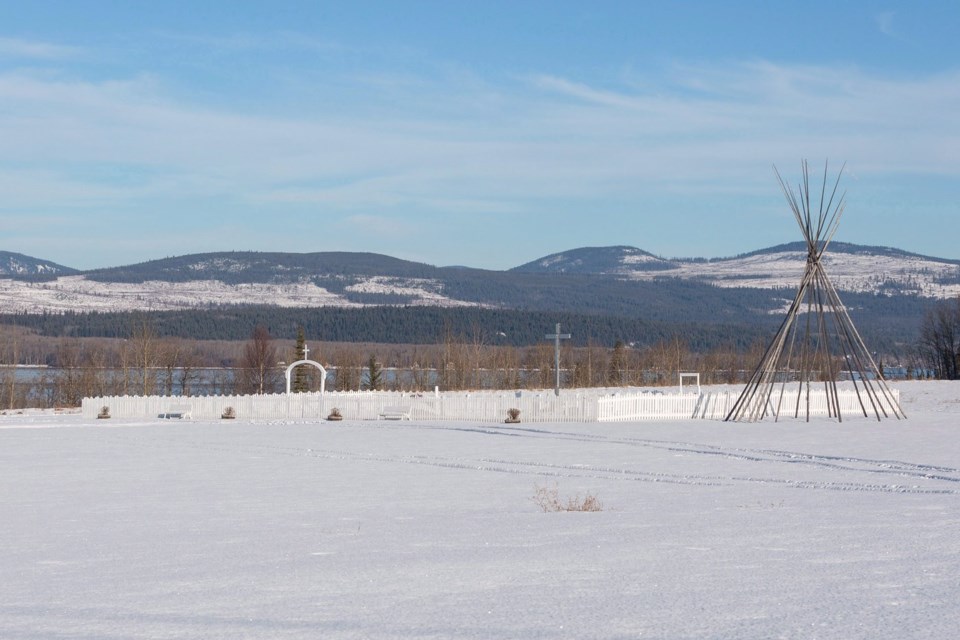The site of a former British Columbia residential school that had its own cemetery since the early 1920s is now the location of potential unmarked graves, says the chief of a Fraser Lake area First Nation.
Nadleh Whut'en First Nation Chief Beverly Ketlo said after almost two years of geophysical survey work, the nation believes it can confirm potential unmarked graves at the site of the former Lejac Indian Residential School, located about 160 kilometres west of Prince George.
The First Nation had always known children were buried at the church-run institution because many of their graves were marked in a cemetery that had been there since 1922, when the school opened, but the survey's findings suggest a number of unmarked graves, she said at a news conference Saturday.
"We have information today that shows that there are likely grave sites in the location of the Lejac school," said Ketlo. "We know there were more children there, we just didn't know where. How many, and this is a question I ask everybody I meet, how many of the schools you attended had graveyards in the backyard?"
The survey did not positively identify any unmarked graves, but indicated "23 markers" of potential burial locations, she said.
The geophysical survey work, using ground-penetrating radar and magnetometry, started in the winter of 2023 and focused on areas identified by survivors of the residential school, said Ketlo.
Peter Takacs, a ground-penetrating radar specialist with 91原创-based GeoScan, which conducted the survey, said the technology is "not perfect," but can be used to locate a variety of changes or readings beneath the surface.
Magnetometry is used to detect properties and changes of magnetic aspects within the soil.
The GeoScan report tabled at the news conference said about 142,500 square metres, the equivalent of 27 football fields, were searched with ground-penetrating radar.
Former chief Archie Patrick, who attended the Lejac school as a young boy, said the students were also forced to work as labourers, doing heavy farm work while being denied the dietary benefits of the food they helped produce.
"Essentially, it was a jail for children in which you worked without pay to pay for your own brainwashing," he said.
About 7,850 Indigenous children attended Lejac school, which was in operation from 1922 to 1976.
The Nadleh Whut'en First Nation said there were 38 documented deaths at the institution.
Ketlo said among the Lejac Indian Residential School's darkest chapters was the deaths of four boys in 1937.
Ranging in age from seven to nine, the boys froze to death in January 1937 after running away from the school to visit their families in -30 C temperatures, she said.
Ketlo said the First Nation is sharing information as officials receive it because "survivors have a right to know."
This report by The 91原创 Press was first published Nov. 30, 2024.
Dirk Meissner, The 91原创 Press



